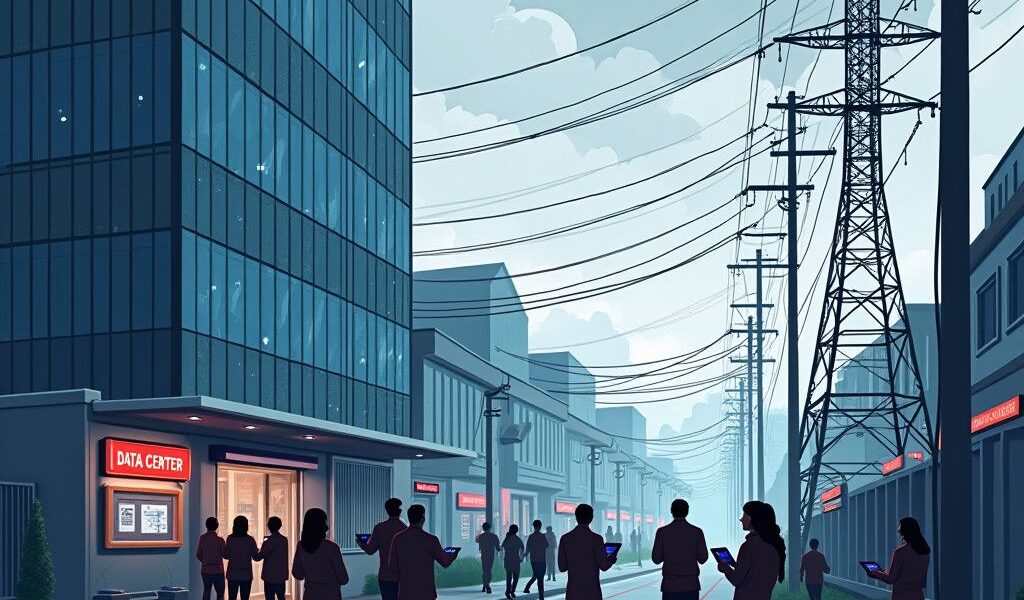AI Data Centres: Straining the US Power Grid
The rise of AI has transformed various sectors, driving immense gains in efficiency, innovation, and data processing capabilities. However, an accompanying challenge is the substantial energy demand from AI data centres, which is beginning to strain the US power grid. This issue raises critical questions regarding energy consumption and highlights the urgent need for more sustainable practices in the tech industry.
In recent years, the computational demands of AI applications have skyrocketed. Data centres — the backbone of the AI ecosystem — require vast amounts of electricity to power and cool servers. According to a 2023 report by the International Energy Agency (IEA), data centre energy consumption was about 200 terawatt-hours (TWh) per year in the United States, accounting for nearly 2% of the country’s total electricity demand. With AI’s rapid advancements, these figures are poised to rise even further.
A direct correlation between AI data centre activity and spikes in energy use has been observed. For instance, during peak AI training periods — often lasting days to weeks — these data centres can consume as much energy as some small cities. A single AI model can require more than 1,000 GPUs running continuously, leading to energy costs that surpass $10 million for just one training cycle. This exponential increase in energy demand not only affects operational costs but poses risks to grid stability, exacerbating existing challenges in energy security.
Furthermore, the phenomenon of “bad harmonics” has emerged as a serious concern. Bad harmonics, which arise from the nonlinear loads presented by data centres, can lead to unexpected spikes in electrical consumption, affecting grid reliability. Utilities report increased instances of voltage fluctuations, damaging both the grid infrastructure and connected appliances. Affected devices, such as computers and HVAC systems, not only function inefficiently but may require premature replacements, compounding the environmental impact through increased waste and resource depletion.
Examples of large tech companies illustrate the severity of this situation. Google, for instance, has committed to achieving carbon neutrality in its data centres by 2025. This initiative involves optimizing energy efficiency and investing in renewable energy sources. Likewise, Microsoft has pledged to become carbon-negative by 2030, emphasizing transparency and accountability in its energy consumption.
Despite these commitments, the overall pace of change remains slow. The need for substantial infrastructure upgrades to support the evolving landscape of AI is clear. Solutions such as energy-efficient cooling systems, innovative chip designs, and intelligent load distribution can help mitigate the strain on the power grid. In a recent case study, Salesforce implemented a robust energy management system that cut its energy consumption by 25%, showing that significant savings are feasible with the right approach.
Investments in renewable energy are also critical. Wind and solar power, along with energy storage solutions, can buffer the demand during peak usage times, reducing the burden on the grid. Companies like Amazon Web Services are making strides in this area, investing in large-scale renewable projects to power their data centres sustainably.
However, while tech giants take steps toward cleaner energy, the responsibility also extends to data centre operators across the board. Implementing energy-efficient designs and leveraging innovative technologies can no longer be seen as optional; they are essential for long-term sustainability.
The US government also plays a pivotal role. Policies that incentivize energy-efficient operations and support the development of renewable energy sources will be critical. Regulatory frameworks need revisions to support sustainable data centre designs, addressing the growing disconnect between technology advancements and energy infrastructure.
In conclusion, the intersection of AI, energy consumption, and power grid stability presents a pressing challenge for the tech industry and beyond. As AI continues to reshape our world, proactive measures must be taken to ensure that energy demands are met without compromising grid reliability or environmental integrity. Stakeholders, including tech operators, policymakers, and consumers, must work collaboratively to implement solutions that will pave the way for a more sustainable future.








